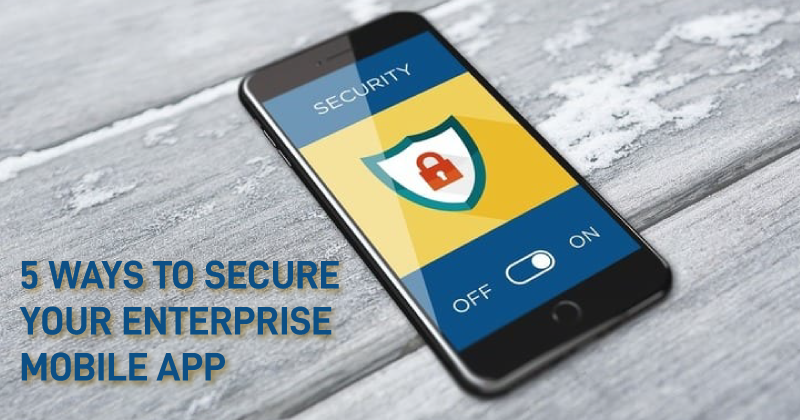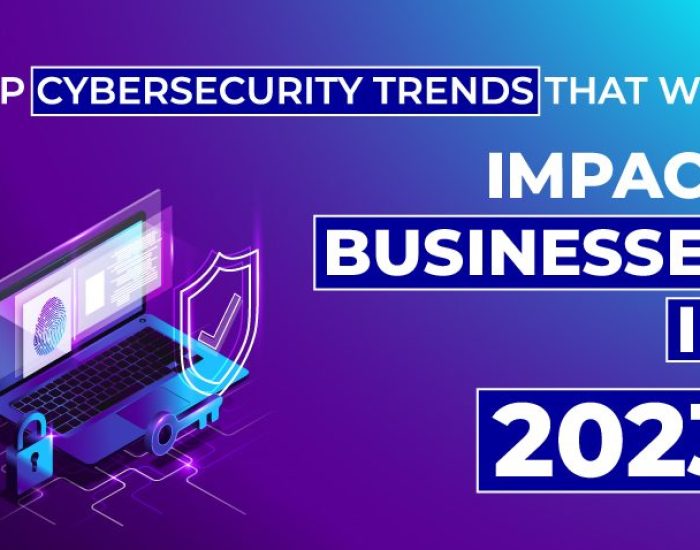5 ways to secure your enterprise mobile app
 Nowadays, there is a substantial increase in the usage of mobile applications and the exponential growth of internet-connected devices in enterprises. Generally, Enterprise mobile applications foster workers and processes by allowing mobile computing across wireless networks and mobile devices. Enterprise mobile applications are considered emerging technology but can be challenging for organizations.
Nowadays, there is a substantial increase in the usage of mobile applications and the exponential growth of internet-connected devices in enterprises. Generally, Enterprise mobile applications foster workers and processes by allowing mobile computing across wireless networks and mobile devices. Enterprise mobile applications are considered emerging technology but can be challenging for organizations.
With the advancement in digital technologies, cyber threats have also increased. Cybercriminals are constantly searching to find vulnerabilities in a company’s IT infrastructure. There can be some loopholes within an application that may lead to the infiltration of hackers. To protect your business, it’s necessary to have the top-notch security of your mobile application. This article will discuss ways to secure your enterprise mobile application.
What is an enterprise mobile application?
An enterprise application is a program that can help to improve certain aspects of an enterprise. For instance, it can help to automate the company’s repetitive tasks and with the company’s communication. These applications are used in the context of mobile apps brought/created by individual organizations for their employees to carry out operations required to run the organization. An enterprise application is expected to be used by the employees of that organization only.
If you have been keeping up with the news, you must hear about the ongoing issues regarding cyber threats. It includes hackers and malicious individuals who steal or exploit sensitive information from enterprises for their profit. They perform this by infiltrating the system through the entry point and Enterprise mobile applications. We’ll see how an organization can protect these Enterprise mobile applications. But first, let’s see some of the common reasons that can compromise security.
Common reasons that can compromise mobile app security
 Many reasons can compromise security in enterprise mobile applications. Hackers can find loopholes in your application due to the lack of security knowledge in a new language or technology and a small security budget. Here are some common reasons that could allow hackers to get into the application and insecure your organization and your user’s data.
Many reasons can compromise security in enterprise mobile applications. Hackers can find loopholes in your application due to the lack of security knowledge in a new language or technology and a small security budget. Here are some common reasons that could allow hackers to get into the application and insecure your organization and your user’s data.
- Lack of secure data storage
- Missing authentication
- Bad encryption
- Weak server-side security controls
- Absence of binary protection techniques
- Malicious code on the client-side
- Weak implementation of hidden fields
As advanced technologies exist, attackers try to invent new ways to breach. The critical aspect is creating, using, and implementing a secure environment for applications. Let’s discuss some tips to secure enterprise mobile applications.
5 ways to secure your enterprise mobile application
Here are the approaches that you can use as best practices to protect your mobile applications and sensitive enterprise data.
1. Harden the endpoint- Mobile application security starts with the device, and every mobile operating system from Android to iOS requires a different approach to harden the device. Recent iOS and Android vulnerabilities have exposed mobile users to attacks, such as XcodeGhost and Stagefright. Apart from mobile OS flaws, IT must take on a never-ending succession of app fixes and updates. IT administrators should check mobile devices and applications and ensure that the latest updates and patches have been applied to protect mobile applications from hackers.
The most effective method to manage iOS devices is through an enterprise mobile management (EMM) or mobile device management (MDM) product or devices. The relatively lower prices of Android devices make them critical to global organizations. The Android version you should use in an enterprise is Android for Work (A4W). It encrypts the device and separates professional and personal applications into two different profiles.
2. App authentication
Implement multi-factor authentication to prevent unauthorized access and malware attacks. The three essential factors for authentication are
- something a user knows, such as a PIN or a password.
- something a user has, such as a smart device.
- something a user is, such as a fingerprint.
The proper authorization and authentication measures can help the application know who the user is and validate them before sharing the data. It adds a security layer within the application along the login process. Apart from using strong authentication processes, it’s recommended to use Single Sign-On (SSO) to protect your applications. This technique helps users sign in to different applications using a single password.
3. App Wrapping
It’s a mobile application management strategy allowing developers to add an extra security layer to applications. Adding the extra security layer doesn’t change the application’s core functionality. It helps to protect business data without changing the functionality and look of the application. The app wrapping procedure requires a thorough knowledge of application SDK so that the admin can deploy an API using which the policies can be set. The elements that ensure the security of an application include copy/paste protection, corporate authentication, data wipe, jailbreak detection, and application-level VPN runtime integrity check.
4. Strengthening the operating system
During the development phase, strengthening the operating system can reduce security-related issues. Application developers should understand how apps can be deployed and updated for each mobile operating system and the distribution rules imposed by each app store and manufacturer. These rules have mobile data security implications; all mobile operating systems require apps to be signed but differ based on who issues the signing certificate and how that impacts the application permissions. The best practice is to educate developers. For an app development company, it is required to consider and follow robust security guidelines.
5. Encrypt mobile applications and servers
With threats like man-in-the-middle attacks and snooping attacks over cellular or WiFi networks, IT administrators should ensure that all communication between app servers and mobile applications is encrypted. Robust encryption that uses 4096-bit SSL and session-based key exchanges can prevent the most determined attackers from decrypting communications.
Moreover, OT should confirm that data at rest is also encrypted. Network and device encryption prevents data and security breaches and eventually improves applications’ security. There is a need to ensure that the application goes through two security checks, Static Application Security Test (SAST) and Dynamic Application Security Test (DAST).
Final Words
This article has discussed a few best practices to secure enterprise mobile applications. Therefore, an organization should understand the evolving state of cybersecurity and mobility while implementing security tips to protect their applications and data. If you are looking for the best solution to protect your application and data, Protected Harbor is highly recommended to bring value to your business. With our expert tech team, we strive to satisfy our clients. Modern-age solutions include 99.99% downtime, remote monitoring, protected phones, desktops, and cybersecurity. Take the step forward and move towards a safer future with Protected Harbor today!






